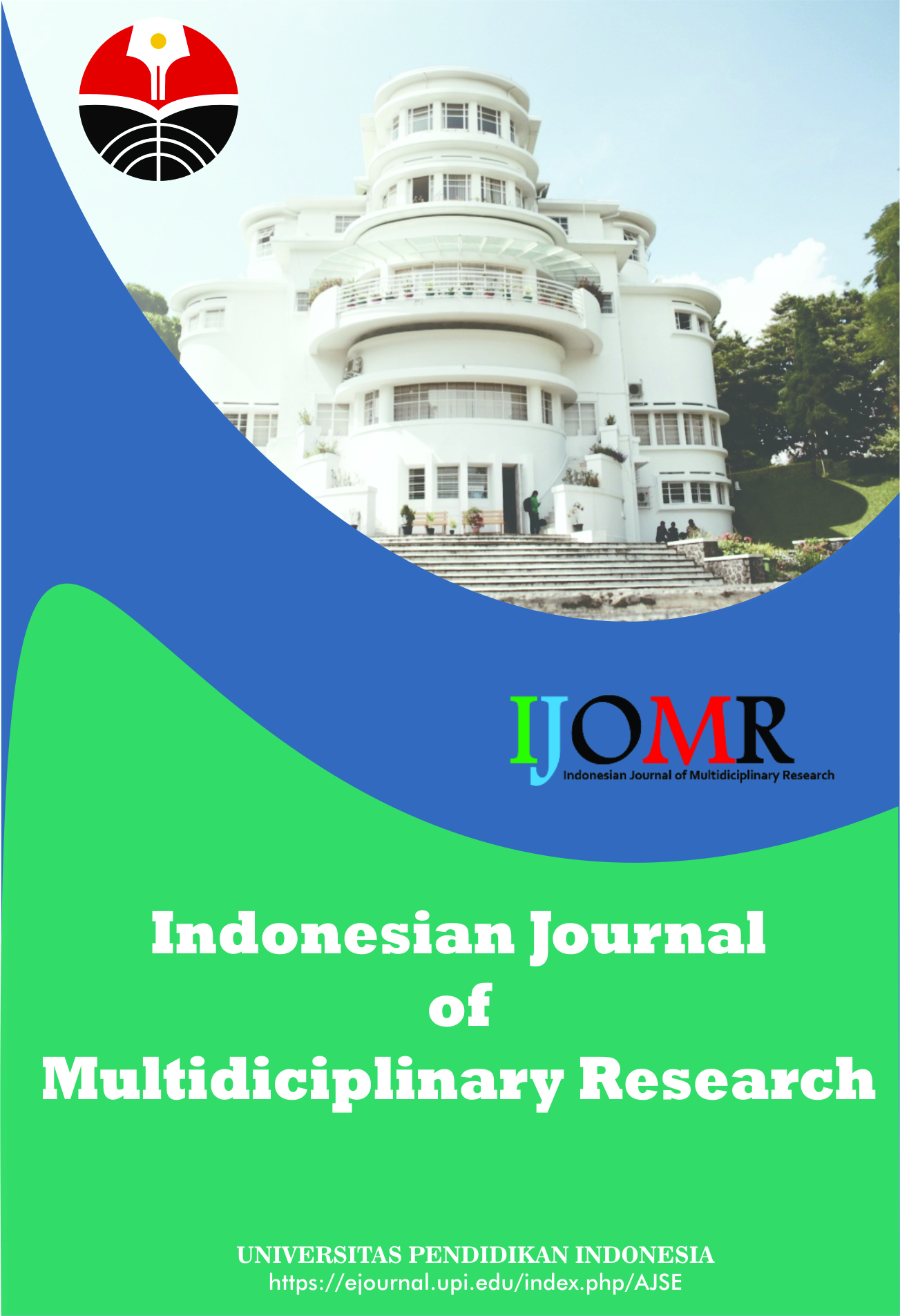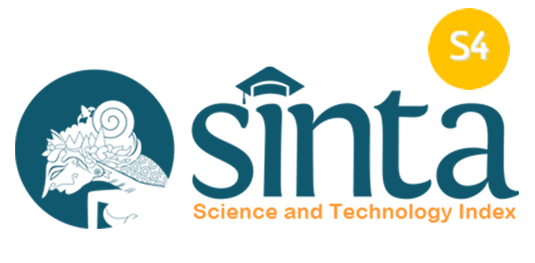Development of Phonic Song Methods to Improve Articulation Ability in Speech Delay Children
Abstract
Keywords
Full Text:
PDFReferences
Abidin, H. M., Rochyadi, E., and Sutriani, N. T. (2021). Implementation of early intervention with family resourced to improve development of expressive language in children with cerebral palsy. Indonesian Journal of Community and Special Needs Education, 1(2), 63-70.
Aulina, C. N. (2012). Pengaruh permainan dan penguasaan kosakata terhadap kemampuan membaca permulaan anak usia 5-6 tahun. PEDAGOGIA: Jurnal Pendidikan, 1(2), 131-144.
Dalim, C. S. C., Sunar, M. S., Dey, A., and Billinghurst, M. (2020). Using augmented reality with speech input for non-native children's language learning. International Journal of Human-Computer Studies, 134, 44-64.
Fong, T., Nourbakhsh, I., and Dautenhahn, K. (2003). A survey of socially interactive robots. Robotics and Autonomous Systems, 42(3-4), 143-166.
Harrison, L. J., McLeod, S., Berthelsen, D., and Walker, S. (2009). Literacy, numeracy, and learning in school-aged children identified as having speech and language impairment in early childhood. International Journal of Speech-Language Pathology, 11(5), 392-403.
Hearnshaw, S., Baker, E., and Munro, N. (2018). The speech perception skills of children with and without speech sound disorder. Journal of Communication Disorders, 71, 61-71.
Nopriyanti, L. (2012). Peningkatan kemampuan membaca anak melalui metode fonik Di taman kanak-kanak Islam adzkia Bukittinggi. Jurnal Ilmiah Pesona PAUD, 1(1), 1-10.
Novianti, R. (2021). Penerapan metode fonik dalam meningkatkan kemampuan membaca permulaan pada anak tunagrahita ringan kelas 5 SD Di Slb Bc Nike Ardilla Ypwn. INCLUSIVE: Journal of Special Education, 7(1), 55-64.
Putri, S., Laily, N., and Amelasasih, P. (2021). Efektivitas metode fonik terhadap penurunan tingkat keterlambatan bicara anak usia 4-5 tahun. AL-MURABBI: Jurnal Studi Kependidikan dan Keislaman, 7(2), 171-184.
Salamah, U., Agustin, M., and Romadona, N. F. (2018). Penggunaan metode cerdas berbhasa indonesia fonik (cbifonik) untuk melatih kemampuan membaca permulaan anak. Edukids: Jurnal Pertumbuhan, Perkembangan, dan Pendidikan Anak Usia Dini, 15(1), 1-8.
Shriberg, L. D., Tomblin, J. B., and McSweeny, J. L. (1999). Prevalence of speech delay in 6-year-old children and comorbidity with language impairment. Journal of Speech, Language, and Hearing Research, 42(6), 1461-1481.
Tallal, P. (1980). Auditory temporal perception, phonics, and reading disabilities in children. Brain and Language, 9(2), 182-198.
Virdyna, N. K. (2015). Penerapan metode fonik dalam pembelajaran bahasa Inggris bagi anak usia dini. OKARA: Jurnal Bahasa dan Sastra, 9(1), 113-130.
Visser-Bochane, M. I., Reijneveld, S. A., Krijnen, W. P., Van der Schans, C. P., and Luinge, M. R. (2020). Identifying milestones in language development for young children ages 1 to 6 years. Academic Pediatrics, 20(3), 421-429.
Westhisi, S. M. (2019). Metode fonik dalam pembelajaran membaca permulaan bahasa inggris anak usia dini. Tunas Siliwangi: Jurnal Program Studi Pendidikan Guru PAUD STKIP Siliwangi Bandung, 5(1), 23-37.
Westhisi, S. M. (2019). Metode fonik dalam pembelajaran membaca permulaan bahasa inggris anak usia dini. Jurnal Tunas Siliwangi, 5(1), 23–37.
Westhisi, S. M. (2020). Aku istimewa, aku bisa: Membaca permulaan bahasa Inggris melalui metode fonik bagi anak speech delay. Al-Athfal: Jurnal Pendidikan Anak, 6(1), 81-94.
Zakiyah, F. (2019). Pendekatan instruksional pada permainan ‘fast for word reading series’untuk perkembangan keterampilan membaca bahasa inggris anak dwibahasa. Etnolingual, 3(2), 119-130.
DOI: https://doi.org/10.17509/ijomr.v2i2.39584
Refbacks
- There are currently no refbacks.
Copyright (c) 1970 Kantor Jurnal dan Publikasi, Universitas Pendidikan Indonesia (UPI)

This work is licensed under a Creative Commons Attribution-ShareAlike 4.0 International License.
Indonesian Journal of Multidiciplinary Research (IJOMR) is published by Universitas Pendidikan Indonesia (UPI)















